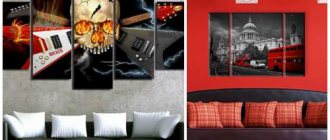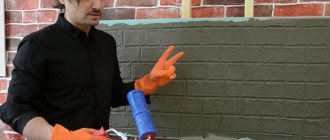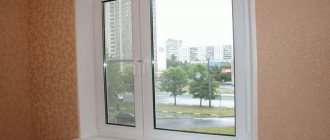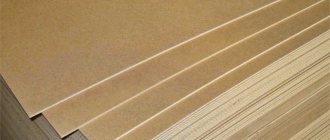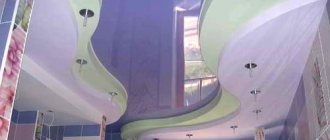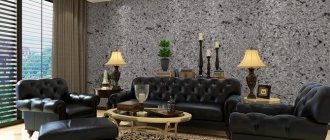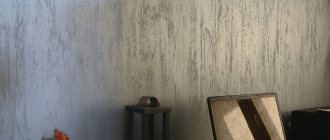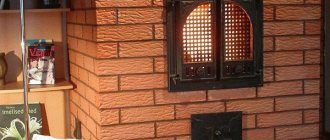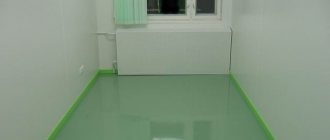Lining in the kitchen
Wood finishing in the interior is used everywhere. Boards or profiled wooden panels ( lining, imitation timber, block house ) are used to cover the walls and ceilings of rooms that are completely different in functionality.
For places such as a sauna or bathhouse, wooden lining is the only option. But in other rooms, wood cladding was in demand before, but now it’s just becoming a hit. is especially popular in the kitchen , dining room, living room, and lounges.
A wide variety of wood types, the choice of board profile (flat, embossed, radius), the shape of the joint - all this allows you to run wild with your imagination and create a real masterpiece, a unique, inimitable design.
Modern paint and varnish coatings reliably protect the top layer of wood from moisture. Therefore, without a doubt, you can use lining in the kitchen not only on the ceiling, but even where there is a working wall or a cooking table. Good external coatings of lining in the kitchen give strength to the wood and, if necessary, you can easily wet clean the wooden surface of the walls, ceiling, floor without compromising the appearance of the material and its physical and technical characteristics.
What materials are used to decorate the kitchen?
A variety of materials are used for cladding rooms and kitchen furniture. The most common of them are products made of wood, plastic and ceramics.
The following types of lining are used for cladding walls and ceilings:
- Wooden;
- Plastic;
- Wood fiber (MDF lining).
To install the lining, the following methods are used:
- Vertical;
- Horizontal;
- Diagonal.
The vertical method is the most popular installation method. The vertical method provides the best protection for the panel connection system from moisture.
With the horizontal method, the grid posts have a vertical position. This method provides the best degree of ventilation of the wall cladding. The diagonal method is notable for its aesthetic characteristics. Used to create a unique interior. The lining in the kitchen, fixed in various ways, is shown in the photo in this article.
Kitchen finishing with clapboard
The lining in the kitchen can be made of pine or alder. The lining profile can be selected based on your personal wishes. Functionally, any profile is equally good. That is, when choosing, you should be guided only by your personal preferences in appearance.
There are these types of profiles:
- Europrofile
- seamless lining (double-sided)
- radius (block house - log imitation)
- brick - a special type of finishing - imitation of brickwork made of wood
Wood is a hard, solid, durable material,
which can perform structural significance and bear the weight load. That is, if you have a wall made of wood, you can screw any hooks, hangers to it, mount wall cabinets, shelves, mezzanines (plastic facing materials or plasterboard wall structures do not allow you to do this - in this case you need to know where the installation wall was laid lath under plastic or drywall).
In addition, wooden lining is an impact-resistant material - if, while moving furniture (for example, a dining table), there is pressure on a wall lined with wood, then the material will cope perfectly with the impact on it, but if it were plastic or MDF panels, a plasterboard wall - there is a risk of significantly deforming the surface and causing a hole. That is, wooden lining in the kitchen is not only beautiful, but also a very practical, reliable, durable material.
A cozy kitchen often becomes one of the favorite places in an apartment or home. Therefore, I want to make it convenient not only in terms of comfortable arrangement of furniture and appliances for cooking, but also to make it pleasant to be in it, so that I would like to admire the wall decor, pleasant little things close to my heart that provoke pleasant emotions and memories .
Why not put a soft, comfortable chair or small sofa in the kitchen? Place interesting magazines or a readable book on the windowsill, hang photographs of your loved ones on the wall, choose cute curtains for the windows, where there is more light you can sow fresh greens and fragrant, spicy herbs. Coming to such a room, you will be happy to cook proven favorite dishes and experiment with preparing new recipes; read, dream alone, or invite friends and start intimate conversations. Remember what you like and what you want to see next to you and be sure to surround yourself with it!
Decorating the walls in the kitchen - how to cover the lining?
We know that in the kitchen, during the cooking process, the overall air temperature may change, humidity may increase, and there is a possibility of fat and liquids splashing.
Therefore, it is logical that we want to provide protection for surrounding surfaces from the effects of these factors. When choosing a kitchen arrangement, we carefully make decisions when choosing materials for furniture, facades, countertops and, of course, for the ceiling, walls, and floor. They should be made of materials that are easy to wash, clean, and keep clean.
What to look for when choosing a coating for lining?
- For external work (house facade, balcony, loggia, gazebo, roof overhangs, gables, garden architectural structures, fences).
- For interior work (kitchen, living room, bedroom, winter garden, gym, sauna)
- Oil paints. The oil-based coating is a good barrier against precipitation (snow, rain). Oil paints are produced on the basis of drying oil (a product of vegetable oil processing) with the addition of astringents, protective components and color pigments. After application to the surface of wood, it takes a long time to dry.
- Acrylate paints. Just like oil paints, they are used for exterior work, protecting the wood from precipitation and ultraviolet rays. Penetrating into the pores of wood, it preserves them and preserves the beautiful appearance of the lining, block house, boards for many years (even bright colors of paint do not fade or fade). Paint of different colors mixes well - you can get any desired shade.
- Water-based acrylic varnishes are used for interior work.
Lining in the kitchen: examples of design and finishing
Such varnishes do not contain any substances that would have a negative effect on the well-being of the body and do not cause allergies. Acrylic varnishes come in one-component (acrylic or polyurethane) and two-component (acrylic + polyurethane). Water-based varnish is a specially developed composition that protects wood, while at the same time maintaining its environmental friendliness (wood continues to breathe and act as a natural humidity regulator in the room).
- Alkyd varnishes are also used for interior work. A distinctive feature is that after coating with alkyd varnish, you get a hard coating that is resistant to moisture, mechanical damage, and abrasion. The surface of the wood, coated with alkyd varnish, steadfastly reacts to the influence of aggressive environments (water, dirt, grease) - it is used where frequent cleaning is required.
Before applying paint or varnish to the wooden surface of the walls or ceiling, it is advisable to prime it. The primer will penetrate the top layer of wood, bind the fibers, make the surface durable, resistant to contamination, and also significantly reduce further consumption of paint or varnish.
Lining in the kitchen: choice, pros and cons
join the discussion
Share with your friends
Lining is one of the most popular finishing materials. The high demand for it is explained simply - it is environmentally friendly, easy to install and at the same time has an affordable price. How can you use lining in the kitchen interior?
Kitchen finishing with clapboard stages:
- Arrangement of the frame on which the lining (or block house, false timber) is attached. The frame can be assembled from 50 x 40 mm timber (if it was planned to put insulation between the wall and the lining) or from a 20 x 40 mm mounting rail.
- Installation of lining on the ceiling. If the room is large in area and the ceiling height is more than 2.5 meters, then false beams on the ceiling with wooden lining between them will look very good. False beams are either sold ready assembled, or you can assemble them yourself (one beam is three 20mm thick boards, fastened together using metal corners). Lining for lining between beams will require short sizes (usually 50-80 centimeters, depending on how many beams you have planned). Lining of this length 500-800 mm always costs less than a long one. It turns out that this type of ceiling arrangement will be excellent in several respects at once: the beams add massiveness, good quality, and naturalness to the wooden interior of the house, while taking into account the low cost of short-sized wooden lining, you can significantly save money.
- Wall cladding with wooden lining (block house or false timber). Installation can be done by placing the lining vertically or horizontally.
- Coating wood with primer.
- Sanding with fine grain sandpaper. The primer penetrates the wood, fills the pores, and raises the layer of pile. In order to obtain an ideal smooth surface after coating with varnish or paint, it is better to lightly “smell” the wood with fine-grained sandpaper.
- Applying varnish or paint. Based on your preferences and combination with other interior details, you can decide to cover the surface of the wood with a clear varnish, tint it in any shade, or paint it completely in one or more colors. It is better to prepare two brushes in advance: wide and narrow. A wide brush will be convenient for painting large areas of wood, and a small brush will be needed for working near slopes, painting joints, junctions with other materials, in corners or hard-to-reach places.
For cladding walls and (or) ceilings, you can choose lining of both coniferous and hardwood. In particular, alder lining is perfect for cladding a kitchen, as it is not afraid of changes in humidity and temperature fluctuations.
By calling us, you can order the necessary material and have it delivered directly to your address. We work throughout Ukraine!
Call seven days a week!
(050) 410-67-05 (067) 411-50-49
You can decorate not only walls, but also floors and ceilings. The room will only benefit from this.
Wooden lining - types and installation method
Eco-friendly materials are preferable for residential premises. Lining made from hardwood is used to decorate a long list of rooms, including kitchens
In order for the wall decoration to last for a long time, it is necessary to pay attention, first of all, to the type of raw materials
Alder and pine lining is best suited for rooms with temperature changes and high humidity. Medium-density wood is not afraid of moisture, does not suffer from physical damage, and retains its shape for many years. Resinous pine is almost resistant to rot and does not suffer from fungus, so it can be used for finishing walls, creating fittings: cabinets for a washbasin or dishwasher, as a back wall for stoves, etc.
After purchasing the required amount of materials, you need to treat them with special means:
- Primer for better adhesion of antifungal agents;
- Antiseptic, anti-fire mixture (if there are problems with the wiring or there is a smoker in the house);
- Clear varnishes or stains to give the desired shade or color.
The mixtures must be applied in this order, applying the next layer after the previous one has completely dried.
It is important to maintain the temperature regime: preparatory work is carried out in the same room where the repairs are being made. It is necessary to monitor changes in humidity: the lining should not be wet
It is important to know that conscientious manufacturers impregnate their materials with antiseptic and other chemicals at the factory, before sending them to the warehouse. Having carefully studied the product passport, you can find that the cost of repairs will drop sharply - you can save on waterproofing and antifungal agents
However, when cutting lining sheets, especially if installation must be done at an angle, it is better to soak the cut area with products, since this is the most vulnerable spot.
It is better to make the mounting frame for wooden lining from treated hardwood timber 3x3 or thicker. It is attached to the wall with dowels and self-tapping screws. Aligning the frame on an uneven wall (relevant for old panel houses) can be done by loosening or pressing the screws or using pads - thin strips that are attached under the beam. The lining itself is mounted using hidden clamps. For budget finishing, you can attach the sheets using self-tapping screws or galvanized nails, but this will damage the appearance of the wall.
For horizontal finishing of the kitchen with clapboard, the frame is mounted vertically on the wall. The distance between the beams in the frame should not exceed 50 cm - this way the lining will be rigidly fixed, and large backlash and loads on the wall can be avoided.
general information
The kitchen - be it in a country house or in an apartment in the city center - bears the heaviest burden in organizing the life of a family. Cooking, even if it involves intensive use of modern household appliances, takes a lot of time. Elevated temperatures, steam emissions, soot - all this has a negative impact on the appearance of kitchen finishing materials, which is why lining walls in the kitchen are being used more and more often.
Lining is a set of long thin slats interlocked with special fastenings on the sides. They are fixed to the ceiling or wall using self-tapping screws.
Previously, this material was used only for cladding balconies, verandas, and loggias. However, today it is increasingly found in home interiors, especially in kitchen areas.
Important. Finishing a kitchen with clapboard has many advantages, the most important of which is the creation of a unique texture that cannot be achieved using other materials.
What style is better to decorate?
Arrangement of a kitchen in a wooden house is carried out in various directions:
- American style. It features a natural color palette - white, beige, grey, green, blue. Usually the surfaces are plain, sometimes there is a floral print in the setting. A small number of accessories are used (mostly framed photos).
- Country style. Classic rustic style with a lot of wood - in decoration, furniture, accessories. It is important to use not new furniture, but restored old samples.
- Provence style. It is also called French country. The wood is usually painted white or a pastel color (lavender, green, blue, yellow). There should be a lot of decor: flowers in pots, bouquets in vases, paintings, beautiful dishes.
The photo shows the dining table in the center of the kitchen
- Scandinavian. The main difference is the love for the color white. Walls and ceilings, furniture, decor - everything can be snow-white. Therefore, it is perfect even for small kitchens.
- Minimalism. Despite the lack of decor and apparent coldness, this direction is ideal for a modern interior. The main requirement is that no details are visible. To do this, order a set with two or three rows of closed cabinets.
The photo shows white furniture without handles in a country house
Material characteristics
Finishing the kitchen walls with clapboard means that the room will be covered with facing material in the form of slats, which will be connected to each other in a tongue-and-groove manner . Initially, wood was used as a material for making strips, but then the industry began to increasingly actively produce linings from other materials for kitchen cladding.
The materials used in the manufacture of lining are:
Lining designed for decorating walls in the kitchen is available in standard sizes:
- Thickness - 7-14 mm.
- Width - approximately 10 mm.
- Length - up to 3 meters (cut into required parts during installation).
Attention! Each material has both advantages and disadvantages, so you need to choose after all the properties of the proposed product have been studied.
The material is offered by manufacturers in a wide variety of colors and configurations.
Tree
Wooden lining for the kitchen is perfect for furnishing a private house, especially from a log house. The material fits naturally into the interior. Its main characteristics are:
- Ecological cleanliness.
- Interesting appearance.
- Durability.
- Easy to process and install.
The basis of this finishing material is a natural product - wood. It has a pleasant aroma and can be the basis of an original interior. Moisture, almost always present in the kitchen, is absorbed by the wooden upholstery, and vice versa - when the air becomes dry, the wood releases what it has accumulated. This material is said to “breathe”. In addition, kitchens in a house made of wooden paneling are considered the most luxurious.
It should be remembered that wood is a strong and durable material, but at the same time it requires careful care.
Important. Unlike artificial materials, wood can deteriorate from exposure to fungus or insect pests. You need to be careful and eliminate the source of infection in a timely manner to prevent its further development.
The choice depends on the taste of the owners and income. Most often they prefer natural materials
Plastic
Kitchens made from plastic lining look modern and elegant in a house. This material is quite attractive, can last a long time and is the most reasonable solution for people with relatively modest incomes.
Plastic lining is not an ordinary sheet material, since there are special honeycombs inside that increase the insulating properties. Finishing the kitchen with plastic lining not only serves the purpose of obtaining a good interior, but also allows you to obtain a finish with high performance qualities. This material is different:
- A long operational period, during which it is not subject to significant changes.
- Ability to withstand temperature changes.
- Wide choice of colors.
You can assemble plastic tapes on your own, but following certain rules
Installation
You can cover your kitchen with clapboard yourself. To do this, you must first install the sheathing.
It is attached to concrete or brick walls using dowels. The lathing is the basis for installing the kitchen under the lining.
In addition, with the help of lathing, the walls are perfectly leveled. To do this, wedges are placed under the timber (and it can be either wooden or metal). The sheathing can be made from 50×40 mm timber (if it was planned to put insulation between the wall and the lining) or from a 20×40 mm mounting rail.
Careful assembly of the base is the most important part of the cladding
Remember. A protective agent (primer) must be applied to the surface of the sheathing, even if it is planned to paint the lining in the kitchen.
When installing the sheathing, a building level must be used. The more often it is used, the less you will have to redo it . A kitchen upholstered with clapboard should look neat, so special attention is paid to installing the first board.
Following all assembly rules is the key to obtaining a cozy and tidy room
It must be secured carefully, checking the slope in several places using a level. To fasten finished panels, a secret method is used using clamps. After securing the first panel, the next one is inserted into the groove. Before painting the lining in the kitchen, the joints between the planks are filled with a special compound.
Required sequence of lining installation
The lining can also be fastened using self-tapping screws or nails, but the advantage of clamps is that they do not spoil the appearance of the material. If necessary, it can be removed and put back without damage.
Content:
← Return to list
Installation technique for this cladding
One of the advantages that unites all types of lining for kitchen finishing is the ability to install it yourself. This is due to the presence of a tongue-and-groove type fastening, due to which all segments of the cladding are firmly and reliably fastened together. Before you begin the process itself, you can look at the stages of work in the photographs of finishing the kitchen walls with clapboard and make sure that they are not particularly difficult.
Example of panel installation
The installation can be completed quite quickly, because this particular facing material does not require preparatory work on the surface (it does not need to be brought to perfect evenness and smoothness), because the panels are not attached to it, but to a specially equipped sheathing.
The lathing for finishing kitchen walls with clapboard is made from wooden or metal slats, prepared and cut in advance. First, the first rail is placed along the lower level of the cladding, then the last one is placed on top. Next, at a distance of 30-50 cm from each other, the remaining horizontal planks are attached to the wall surface, and then the first corner profile is installed (most often the left corner is chosen to start). The first panel is inserted into the groove of this profile, and then the second, third, and so on (until the next corner profile, and from it along the wall). Fastening to the frame is done with self-tapping screws, then ceiling and floor plinths are installed on top and bottom.
The kitchen is the most favorite place in the family. People spend most of their time here. A beautiful and warm room gives a feeling of comfort and coziness. Therefore, the closest attention is paid to the renovation and decoration of the kitchen. Lining in the kitchen gives the room sophistication and special style.
We recommend studying similar materials:
Decorating the walls in the kitchen with MDF panels is an interesting design option
MDF panels are often used for interior decoration; simple installation technology allows a large amount of work to be completed in a short period of time. The price of MDF products is low, and the external laminated appearance of various types of wood is quite presentable and allows the use of wall panels in various rooms, including the kitchen. What are the options for using MDF panels for the kitchen?
How to choose wall panels for the kitchen: decorating the interior
Wall panels for the kitchen are a finishing material that can hide all the unevenness of the walls, creating an ideal and aesthetically attractive coating. In addition, this material has a relatively low price, which is one of its main advantages. There are several types of wall panels, each of which has its own advantages and disadvantages.
What wallpaper color to choose for a white kitchen - design tricks
White kitchens are popular because they add extra brightness and freshness to the room. With its help you can create an interior in any style.
Matching Styles
Loft
The loft style is characterized by minimal or complete absence of decorative finishing. If there are metal, concrete or wooden ceiling beams in the room, then they should definitely be left. In their absence, false beams will help, which can also adjust the space.
Provence
The interior in Provence style is made in light pastel colors and mainly from natural materials. Wooden beams can be painted in one of these shades or have the original color and texture of the wood. This trend is characterized by artificially aged pieces of furniture and decoration.
The photo shows a kitchen in olive color in Provence style. The ceiling is finished in one color with an aged effect.
Country
Country style is difficult to imagine without wooden beams. A spacious room will be decorated with complex structures made of timber; in a small room, simple wooden boards in the right direction will be enough.
Scandinavian
The interior in the Scandinavian style has a light, most often white, color scheme. Natural materials such as wood or stone are used to decorate and fill the room. Ceiling beams made of bleached wood will look harmonious in the interior.
Modern
The ceiling in a modern style can be decorated with beams made of wood, metal or plasterboard. The arrangement can be simple or form a complex geometric figure. The design will be complemented by stylish lamps, LED strip or spotlights.
Classical
The interior in a classic style will be decorated with smooth wooden or plaster beams. Cross-on-cross masonry will look harmonious.
Chalet and rustic
The chalet and rustic style are characterized by the cozy atmosphere of an Alpine home. Wooden ceiling crossbars do not have to be painted; the original color, texture and pattern of the wood will come in handy. In such a design, it is appropriate to use lamps with warm light, emphasizing the comfort and warmth of the interior.
The photo shows a chalet-style attic. The decoration is entirely made of natural wood.
Lining in the kitchen: we use natural wood
Wallpaper for walls plays an important role in creating a cozy atmosphere. To decide which color of wallpaper to choose for a white kitchen, you need to know some nuances.
Wallpaper for the kitchen in red: features of choice, design, color combination
Since the kitchen is a place of high humidity and temperature changes, it is necessary to carefully select wall coverings. In addition to quality characteristics, it must be in harmony with the interior of the room. What wallpaper color would be most optimal for a red kitchen? How to choose wallpaper so that it harmonizes with the environment?
The modern market is distinguished by a huge selection of facing materials to suit every taste and material capabilities of potential consumers. But, despite numerous options and proposals, finishing the kitchen with wood has been and remains popular and in demand among owners of apartments and country houses. The environmental friendliness and naturalness of wood, a warm and cozy atmosphere, a feeling of calm and closeness to nature emphasize the importance of using solid wood or lumber in the interior of a kitchen space. In particular, they are used to cover walls, ceilings and floors.
Wood finishing materials
The delicate forest aroma and unique appearance of a kitchen “dressed” in wood will turn it into a favorite place for all household members. Having a little repair work skills, the owner will be able to independently cope with the finishing of any surfaces. It is not always necessary to completely cover walls or ceilings with wood. Often the material is combined with tiles or plastered and then painted areas.
The interior finishing of the kitchen is carried out by:
- clapboard;
- blockhouse;
- panels;
- gusvarblocks;
- wooden wallpaper;
- timber.
When purchasing finishing materials made of wood, you should pay attention to the percentage of knots in the wood and the uniformity of its structure. The grade and cost of the product depend on these parameters.
The classification is made as follows:
- extra – complete absence of any defects, including knots, even the smallest ones;
- A – per one and a half meters of length, the presence of no more than one “live” knot of a light shade is allowed;
- B – at one and a half meters in length, the presence of less than four dark-colored knots is possible;
- C - low-grade wood, may even have falling knots. Not used for finishing.
The structure of wood is quite porous, so it has the disadvantage of being able to absorb moisture and odors.
Pre-treatment of wood with appropriate antiseptics, fire retardants and other impregnations, as well as subsequent application of varnish, wax, oils or paints, helps protect wood.
Types of lining
Before choosing a certain type of lining, you need to understand what they are and what the differences are (also find out how to decorate the walls in the kitchen).
PVC (plastic)
Colored plastic lining.
PVC (plastic) lining is intended for finishing walls and ceilings; it is produced without patterns, but can be of different colors.
It is this modern material that allows you to get tangible savings when finishing walls and ceilings. PVC lining, the price of which is significantly low and pleases potential buyers, is perfect for installation in any room, including the kitchen.
Wooden
Wooden lining is divided into classes:
- Extra, completely free of knots and defects;
- A – only light live knots are possible, no more than one per 1.5 meters in length;
- B – knots can be dark, no more than four per 1.5 meters in length;
- C – knots may fall out.
Naturally, the higher the class, the better the quality of the material.
Important. To cover walls in the kitchen, as in other rooms, use only well-dried boards; its humidity should not exceed 15%. The ideal option is material treated with an antifungal compound and dried in an autoclave.
Lining in the kitchen interior
The shade of natural wood can be changed by treating the surface with stain before further coating it with a varnish or oil composition.
Lining
The material represents the most economical option for wood cladding, which is why finishing the kitchen with clapboard is the most popular among our compatriots.
Decorative boards of a certain profile are made from coniferous and deciduous wood. On both sides along the length of the lining there are tongue-and-groove locking joints, the surface of the board is polished, after which the material is sorted. The section can have various shapes, one of the varieties of which is eurolining. Most often, this is what is used for tiling the kitchen.
Eurolining provides deeper grooves for locks and longitudinal recesses on the inner surface of the board.
Walls and ceilings are finished with lining. With its help, surfaces are leveled and the heat and sound insulation of the room is increased. Kitchen finishing with clapboard can be done in different laying directions:
By combining two or three directions, original interior design options are obtained.
Block house
Visually, the walls lined with a blockhouse resemble a wooden frame. Thanks to the peculiarities of production, the material is affordable and attractive (its outer edge has the shape of an arc). The blockhouse is durable, does not deform over time and is easy to install.
For kitchen cladding, narrower elements are used than for the exterior of the house. By reducing their width, the convex areas are thinner, thereby saving the interior space of the kitchen. The blockhouse, in this case, does not take up extra cubic capacity.
Panels
Decorative panels are made mainly from valuable wood. They add sophistication and nobility to the kitchen interior. Panels made of solid oak, cedar or alder are expensive finishing materials. Cheaper options are made from pine or spruce, onto which veneer made from valuable wood is glued.
It is recommended to decorate large kitchens with wooden panels, as they will look too rough in a small room.
Manufacturers produce panels in the form of flat geometric shapes:
- smooth;
- carved;
- with inserts;
- with inlay, etc.
They are installed on walls or ceilings, used as a complete or partial cladding of the kitchen.
Gusvarblok
Innovative developments in the field of finishing materials have made it possible to produce original wooden gusvarblock wallpaper, which has multiple designs on the outside. The panels are combined in various free combinations, resulting in exclusive and unique kitchen interiors. Blockhouse lining does not have such capabilities.
The panel joints are hidden, so the finished design is not disturbed by visible cracks or fasteners. The only drawback of the gusvarblok is its high cost.
Wood wallpaper
On sale are cork and roll wallpaper made of veneer glued onto fairly thick paper. They can be applied to radius surfaces, unlike the previously listed materials.
But it is not recommended to cover walls or ceilings in the kitchen with wooden wallpaper. The material reacts negatively to exposure to moisture and steam, as well as to frequent changes in temperature, which are an integral part of the premises where food is prepared.
timber
When decorating kitchens with high ceilings, designers often use hanging and overhead beams made from profiled beams and round logs. They are installed:
- in a chaotic manner;
- parallel rows;
- perpendicular or at an angle to each other.
In this case, the gaps between the beams are left unfilled, or they are covered with wooden figured elements.
On the ceiling and walls of a small kitchen, small cross-section wooden slats would look appropriate, “breaking” the surface into regular shapes.

